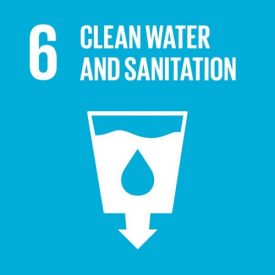Primary Functions
- Understand how business leadership can advance Goal 6 on Clean Water and Sanitation
Detailed Description
Sustainable water management is essential for human dignity and wellbeing, economic productivity, and environmental resilience. Current water resources are highly stressed, with two thirds of the world’s population projected to be living in water stressed areas in 2025, a problem climate change and population growth will only exacerbate. In addition, 2.1 billion people worldwide lack access to safe, readily available water at home, and 4.5 billion lack safely managed sanitation.
Businesses are impacted by and directly impact the quality and quantity of water resources through the production of goods and services, primarily through consumption of water and discharge into shared water resources. In water-stressed areas, these impacts are more acutely felt and where businesses need to pay particular attention. Ninety per cent of water consumed in the world today is used for agricultural or industrial purposes, highlighting the crucial role that businesses must play in promoting the responsible use and effective governance of global water resources. Infrastructure funding required to achieve SDG targets related to water and sanitation are estimated to be as high as $45 billion per year, with the private sector expected to provide a significant portion of investment. To help deliver on Goal 6, all businesses must respect the rights of communities to water and sanitation and are encouraged to support government, business and other stakeholder efforts to provide universal access to clean water and sanitation. . This involves understanding impacts on local ecosystems and communities, particularly the cumulative impacts that businesses have on water resources; monitoring own water use; and taking appropriate action ranging from internal (improving water efficiency, reducing water inputs, investing in wastewater treatment, water reuse) to external collaborations to address risks and impacts in water intensive sectors such as manufacturing, agriculture, and extractives.
Leading businesses build on responsible business practices and take extraordinary steps to understand and respond to identified water risks to, and impacts of, their end-to-end operations on watersheds and communities. They can do so by implementing water stewardship plans developed in consultation with other water users. Leading action can also involve improving access to clean water and sanitation across own facilities, throughout supply chains, and the wider community. Business can do this through investment and engagement with government and civil society for the provision of water and sanitation (WASH) and the holistic management of water resources to meet social, economic and environmental needs. They can also protect and restore natural infrastructure that supports clean water provision.
The case for business leadership on water issues is supported by the key role water resources play in production across industries. Over 80 per cent of all jobs globally are dependent on sustainably managed water resources and related services. Unabated, water scarcity is estimated to cost as much as 6 per cent in GDP by 2050.






Reviews
There are no reviews yet.